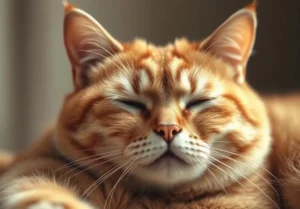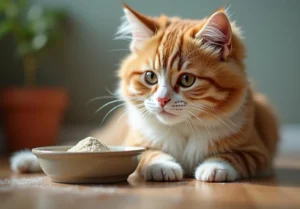Cats are fascinating creatures with many unique behaviors that can leave us scratching our heads. One particularly curious habit they engage in is cleaning each other’s bottoms. Why do these furry felines partake in such a seemingly unsavory activity? Let’s uncover the reasons behind this peculiar behavior.
Instinctive grooming behavior
Cats are known for their meticulous grooming habits, and it goes beyond just keeping their fur clean. Grooming is an essential part of a cat’s natural instincts and social structure. In the wild, grooming helps establish hierarchy within a group of cats. When domestic cats clean each other, it reinforces social bonds and maintains a sense of belonging within their feline family.
Additionally, grooming serves as a form of non-verbal communication among cats. It helps them bond, show affection, and establish trust. When one cat grooms another’s bottom, it signifies a level of intimacy and trust between them. It’s their way of saying, “I’ve got your back.”
So, the next time you catch your feline friends engaging in this behavior, remember that it’s not just about cleanliness—it’s about strengthening their social connections and maintaining their natural instincts.
Maintaining cleanliness and health
Ensuring that each other’s bottoms are clean may not be the most glamorous aspect of cat grooming, but it plays a crucial role in preventing health issues. Cats are meticulous self-groomers, but there are certain areas that they can’t reach on their own. This is where their feline friends come in to lend a helping paw.
By cleaning each other’s bottoms, cats help remove dirt, feces, and potential parasites that could lead to infections if left unattended. This mutual grooming also allows them to inspect each other for any skin issues, wounds, or abnormalities that may require attention.
It’s like having a built-in health check system. So, the next time you witness this behavior, know that it’s their way of looking out for each other’s well-being in addition to keeping clean.
Bonus Tip: If you notice excessive grooming or any signs of discomfort during this process, it’s essential to consult with your veterinarian to rule out any underlying health issues. Remember, a healthy bottom leads to a happy cat!
Mutual grooming among cats serves as more than just a hygiene practice – it’s a way for them to strengthen their bonds and establish their social hierarchy within a group. By engaging in grooming sessions, cats create a sense of closeness and trust with each other, helping to maintain a harmonious living environment. This behavior is especially common among cats that share a close relationship, such as littermates or cats that have grown up together. So, the next time you catch your feline friends cleaning each other, know that it’s their way of showing affection and building a stronger connection with one another.
Helping with hard-to-reach areas
Cats may assist each other in grooming hard-to-reach areas, such as their bottoms, that they may struggle to clean effectively on their own. This cooperative grooming behavior is particularly helpful for cats that are less flexible or may have difficulty reaching certain spots, ensuring that they maintain proper hygiene. Cats have specialized grooming techniques that involve licking and nibbling to clean themselves thoroughly, and having a grooming partner can offer assistance in reaching areas that would otherwise be challenging to access. So, don’t be surprised if you see your furry friends lending a paw to help each other stay clean and comfortable.
Additional Insight:
– Cats have scent glands located around their bottom area, so grooming this area not only helps with hygiene but also plays a role in scent-marking, which is essential for communication and territory marking within a cat group. This dual function of cleaning and marking emphasizes the importance of cats assisting each other in grooming their bottoms.
Remember, mutual grooming among cats is a natural and beneficial behavior that not only helps them stay clean but also strengthens their relationships and social bonds within their feline community. So, the next time you witness your cats engaging in grooming sessions, appreciate the deeper significance behind this seemingly simple act.
Showing trust and affection
Have you ever noticed cats licking each other’s bottoms? It might seem strange, but it’s actually a sign of trust, affection, and love among feline companions. When cats groom each other, including their bottoms, they are reinforcing their bond and showing care for one another. It’s like a hug or a kiss for cats, a way of saying, “I trust you enough to let me vulnerable around you.” So, the next time you see your cats cleaning each other’s bottoms, know that it’s their way of expressing their friendship and trust in each other.
Addressing grooming challenges
Cats are known for their cleanliness, spending hours grooming themselves to keep their fur clean and tidy. However, there are areas like the bottom that can be challenging for cats to reach on their own. This is where mutual grooming comes into play. By cleaning each other’s bottoms, cats help overcome these grooming obstacles and ensure that no area is left dirty or unattended. It’s a cooperative effort that helps them maintain their hygiene and comfort levels. So, when you see your cats engaging in mutual grooming, know that they are looking out for each other’s well-being and helping each other stay clean and healthy.
Additional unique insight or angle: Cats grooming each other’s bottoms also serves a practical purpose beyond hygiene – it helps maintain a harmonious relationship within a multi-cat household. By engaging in mutual grooming, cats establish a hierarchy and strengthen their social bonds, reducing potential conflicts over territory and resources. So, next time you witness your feline friends grooming each other, appreciate the role it plays in maintaining peace and order among them.
Promoting overall well-being
Cats grooming each other, including cleaning each other’s bottoms, isn’t just for hygiene – it’s like a kitty spa day! This mutual grooming ritual not only helps in keeping their coats pristine but also strengthens social bonds. Grooming releases calming endorphins in cats, promoting a sense of well-being and reducing stress. It’s their way of saying “I’ve got your back, buddy!” So, the next time you catch your feline friends in this act, know that it’s their version of a supportive hug.
For a unique insight, grooming can also help resolve conflicts in multi-cat households. Through grooming, dominant cats establish their leadership, and grooming subordinates is a way of maintaining peace and order within the group. It’s like a diplomatic solution, cat-style!
Fun facts about feline grooming
Have you ever noticed how meticulously cats groom themselves? It’s not just for vanity – a cat can spend up to half of its waking hours grooming! They have tiny, hook-shaped papillae on their tongues that act like a comb to remove dirt and loose fur. Plus, grooming helps spread natural oils on their fur for that shiny, healthy look.
Here’s a fascinating tidbit: when cats groom each other’s bottoms, they’re actually respecting each other’s boundaries! Cats are particular about cleanliness, so by offering to clean a friend’s hind end, they show trust and camaraderie. It’s like a mutual agreement of “I scratch your back, you scratch mine.”
Remember, grooming is more than just a chore for cats – it’s a social activity that brings them closer together. So, the next time your furry pals engage in cleaning each other’s bottoms, appreciate the bond they’re strengthening and the love they’re sharing. It’s the purrfect display of friendship in the feline world.
The importance of mutual care
Cats cleaning each other’s bottoms may seem a bit peculiar, but it actually serves a crucial purpose in the feline world. This mutual grooming behavior is more than just a hygiene routine – it strengthens the bond between cats and fosters a sense of community within their social group. By helping each other clean hard-to-reach areas like their bottoms, cats demonstrate trust, affection, and a willingness to care for one another.
While cats are generally known for being independent creatures, they also rely on social interactions for emotional support and companionship. Grooming each other’s bottoms is a form of social behavior that helps maintain harmony within a group of cats. It helps reduce tension, establishes hierarchy, and promotes overall well-being among feline companions.
Moreover, grooming is a soothing and stress-relieving activity for cats. When one cat cleans another’s bottom, it can be a calming experience for both parties involved. It reinforces their social bonds and creates a sense of security within the group.
Most importantly, mutual grooming helps cats maintain good hygiene, especially in hard-to-reach areas like their bottoms. It ensures that all members of the group stay clean and healthy, reducing the risk of infections and other health issues. So, the next time you witness your cats engaging in this behavior, remember that it’s not just about cleanliness – it’s a display of love, trust, and social harmony among our feline friends.
The anatomical advantage of cleaning each other’s bottoms
Apart from the social and emotional benefits of cats grooming each other’s bottoms, there’s also a practical advantage to this behavior. Cats possess a unique anatomy that makes it challenging for them to reach certain areas for grooming on their own. Their flexible spines and mobile shoulders allow them to clean most parts of their bodies, but areas like the perineum (backside) can be tricky to reach.
When cats clean each other’s bottoms, they assist in maintaining hygiene in this hard-to-reach area. This helps prevent the buildup of dirt, feces, and other debris that can lead to skin irritation, infections, and discomfort. By working together to groom areas that are difficult to access individually, cats ensure that their companions stay clean and healthy.
So, the next time you observe your feline friends engaging in this behavior, appreciate the anatomical advantage it offers. It’s not just about cleanliness; it’s about teamwork, mutual care, and ensuring that each member of the group stays in prime condition.
Alex, a passionate animal lover, has experience in training and understanding animal behavior. As a proud pet parent to two dogs and three cats, he founded AnimalReport.net to share insights from animal experts and expand his knowledge of the animal kingdom.




